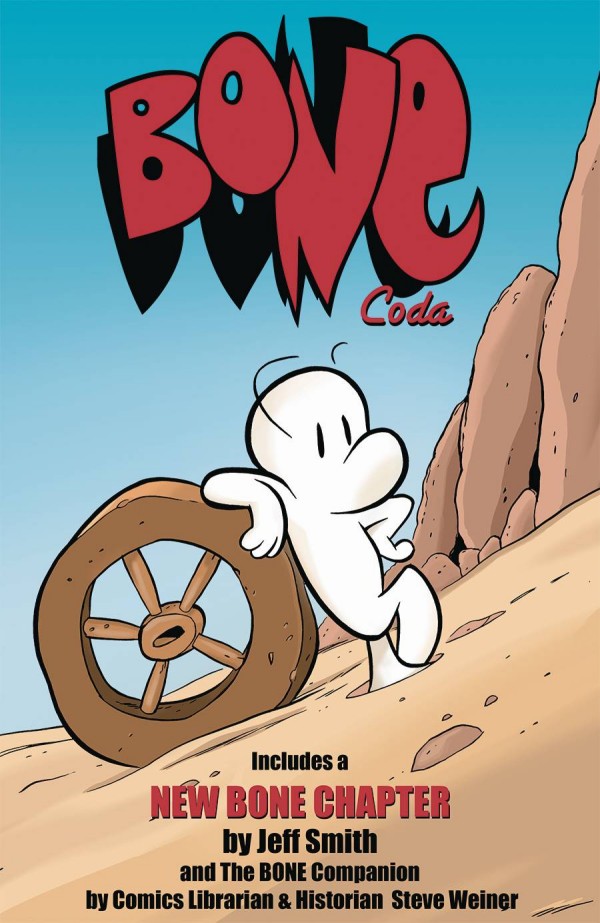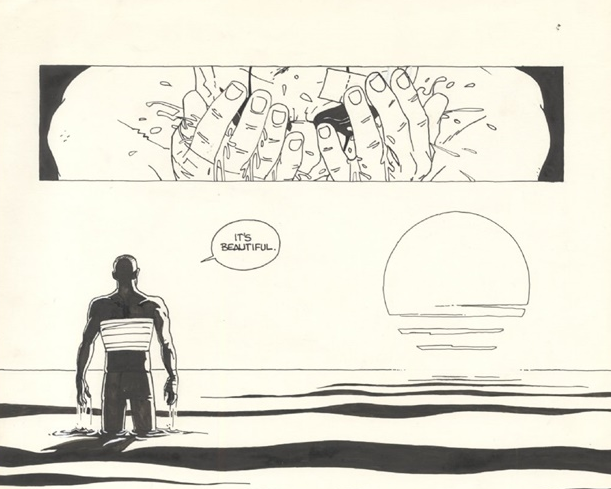
I've thought hard about how I would write about Killadelphia. It stands as such a thoughtful creation itself, a true emblem of what the comics medium can accomplish in ways other media can't quite (or don't until proverbial ground is broken by a comic book). I knew I wanted to wait until the end of the first arc. The story would be far too sprawling to unpack issue by issue. Rarely are books as ambitious as they are successful in meeting those ambitions, but Killadelphia is one of those rare books. Warning: some spoilers after the jump.
Killadlephia opens as Jim Sangster, Jr. recollects on his estranged father’s recent death. Both Sangster men are police officers; the elder Sangster a detective who died on the job while pursuing a lead. Something doesn’t sit quite right with his son, and Jim Jr. realizes he might need to investigate his father’s death, a touch decision for him based on his history with his father. Jim never wanted to return to Philadelphia. He was wracked with terrible memories of his father, and he escaped that world only to be drawn back in by his father’s death. Whatever solace his was looking to encounter after his father’s death, whatever closure he’d feel for that relationship in his life was turned entirely upside down as he chose to pursue the leads his father was chasing at the time of his death almost purely out of spite.

The initial expository sequences are some of the best in the book, and much of that credit deserves to go to Marshall Dillon, whose script lettering is a perfect touch to build the background as Jim investigates the notes from his father's journal. From the beginning, Rodney Barnes layers the narratives atop one another without neglecting the multiple plot threads he dangles from issue to issue. The result is first rate storytelling, deep and complex while still following enough of a line that the reader can hang on easily. Complemented by the Jason Shawn Alexander's superb art, the storytelling aspect of Killadelphia is an exemplar.
Jim Jr.'s investigation leads him down the wildest of rabbit holes that causes him to confront not only the existence of a massive vampire coven operating out of Philadelphia, but also his own father, newly reanimated as a vampire. Killadelphia functions on a few different levels, but one of the more palpable undertones is the examination of the human journey, the regrets of a shorter-than-expected life contrasted with a cursed version of eternal life. Barnes taps this feeling as he gradually reveals the healing growth of their relationship, and contrasts it throughout the book with other human-vampire relationships. Vampire Tevin Thompkins struggles with this notion as he attempts to reconcile his ailing grandmother with his own immortality.
The choice of making this an inter-generational mystery surrounding vampires is purposeful. The notion of vampires as “undead” adds weight to the younger Jim Sangster’s quest. Sangster cannot truly bury his father or his memory without confronting the supernatural. It helps to drive his quest, and it ultimately allows him to reconcile the death of his mother and his strained relationship with his father. Young Jim doesn't go into much detail about his job, but he hints at being a beat cop by "clearing corners," not exactly the accomplished detective his father is. However, as the two men work together over the course of this first volume, Jim Jr grows into his own and eventually makes peace with his father by working alongside him and developing a unique bond that overwhelms the bad feelings of the past.
“The heart. It’s moving, but there’s no rhythm. Like it’s beating out of . . . habit.”
 |
| Alexander's artwork is complex and lively, and he deftly moves between the horrific, the fantastic, and the realistic. |
I was entirely unfamiliar with Jason Shawn Alexander prior to Killadelphia. His art is perfectly suited for a horror book, and I think it is especially strong paired with Barnes’s specifically neo-noir style. Alexander produces beautiful painted pages, rich with texture and depth. His art is somewhere on a spectrum between Rafael Albuquerque and Francesco Francavilla. As a result, Alexander is able to pull back enough for the more noirish detective panels of the book while leaning into the horror panels to bring the right amount of viscera. Colorist Luis NCT finds a great balance that brings Alexander's lines and shades to the top with an overlay that adds to the textured feel.
Alexander's art reminds me that while there are some incredibly talented artists using digital canvases, physical art brings a certain depth to it that is often difficult to pull off digitally, unless you're Mitch Gerads. There is a special organic connection between Barnes and Alexander. The art ebbs with the story, matching tone perfectly. The weight of Alexander's art, the physical presence of it also complements Barnes's script. If Barnes wants a multi-layered narrative, Alexander's textured art style is the perfect vehicle for it.

Alexander and colorist Luis NCT work in staggering touches of light throughout the book. As most vampire stories, Killadelphia primarily occurs in the dark, but the art team purposefully brings the bright lights to the forefront. These little touches and the resulting shading helps the depth of his work. He also captures the city incredibly well, recreating its streets and alleys with with accuracy and beauty.
The heart of Killadelphia, though, is a conspiracy that stretches back to the early days of the country, and at it's head is the vampiric John Adams looking to realize his dream for the country, albeit one with a slightly different bent than we're familiar with from history class. Adams is an interesting choice for the primary antagonist. Barnes details the rationale for his choice of John Adams in the afterword, but even without that insight, Vampire President Adams details his ambitions directly. While Adams's plan festered for close to two hundred years until a chance viewing of a certain musical theater sensation caused him to rethink the immediacy of his endeavors. So, yes, Hamilton exists in the Killadelphia universe. But even with that, when we're revealed Adams's entire backstory, we understand it through the slow burn. Adams contrasts his own early peak and presidential shortcomings with his second life philosophies and ambition. His plan is one of gradual control, one that will realize the "Land of the free and home of the vampires." There is a deep contrast in that whatever idealistic and selfless ambitions originally motivated Adams in his first life became twisted over years of immortality, morphing from a crusade to an obsession. Adams becomes consumed with remaking the country in his original image, but as a country of vampires under his dominant presidency.
It's with the emergence of Adams's plan that Barnes is able to flip convention concepts of vampirism on their head, recasting the freedom Adams promises by highlighting the bondage and burden of an immortal existence. Barnes thus centers the conversation around power in both conception and exercise. Adams views his vampiric United States as the true successor to the founders' vision, and he intentionally attempts to break down social barriers by mingling the elite with the underclasses. Barnes hints at the idea that the vampiric turn is a sort of liberation movement for the Black vampires Adams turns, that in order to be truly free in America, a Black person would need to transcend their own humanity, or at least such an idea is sold to them and thus perpetuated throughout his cult. Adams maintains his allegiance as a result of the continued promise of perpetual ascendancy. It becomes clear, though, that Adams turns poorer vampires easily as a result of their own desperation, and he intends to use them as fodder, not as transcendent free men.
The more I thought about it, the more I reread pages to examine Barnes's narrative progression, the more I was drawn back to one particular line of narration early in the book. The Mayor of Philadelphia early in book, before any major reveals, lets the reader know exactly what the book is all about. Rereading it, I understood how it would frame the series, and how it would be my vehicle into understand exactly what Barnes and Alexander had delivered. Following a reelection stump speech at a church, he muses to himself, "I'm the god they cannot touch. The one that soothes the dreams deferred."
For Barnes, and eventually Tevin Thompkins, this is the failed promise of the American experiment and ultimately Adams's vampiric second act. It's all an exercise in the maintenance of power, of keeping the marginalized confined to the margins by continually deferring the dream.
Killadelphia is a tough story to pin down. It is ostensibly a vampire story, but it is a vampire story that uses said vampirism as an extended metaphor that holds the entire narrative together while also adding extra impetus to the plot. It is thus both a vampire story and a story that uses vampires to make a point. It is also very much a story of familial bonds, of disappointment and reconciliation, of coming to terms with who you are by understanding what you were. Wedged in between all of this is a very robust set social, political, and cultural commentaries that all serve to elevate the core narrative.

Killadelphia Volume 1: Sins of the Father
Writer - Rodney Barnes
Line Artist - Jason Shawn Alexander
Color Artist - Luis NCT
Color Artist - Luis NCT
Letters - Marshall Dillon
Published by Image Comics






